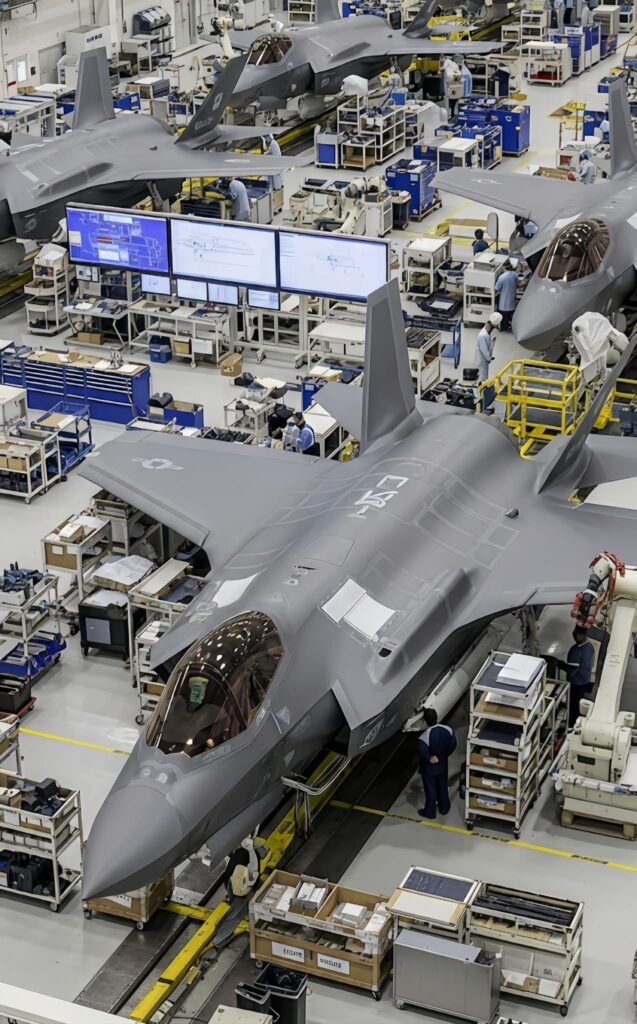
The F-35 Lightning II has been at the forefront of fifth-generation fighter technology since it first entered service. Designed to combine stealth, agility, and advanced sensor systems, the jet already represents a leap forward in combat aviation. However, the demands of modern warfare continue to evolve, requiring the aircraft to undergo ongoing improvements. The upgraded F-35 Lightning II reflects not only refinements in technology but also the adaptation of this fighter to face future threats in increasingly complex battle environments.
Block Upgrades and Modernization
The most significant enhancements to the F-35 program are delivered through Block upgrades, which are software and hardware improvements rolled out in phases. For example, Block 4, the current modernization effort, includes new sensors, more advanced electronic warfare capabilities, and expanded weapons compatibility. This allows the F-35 to employ a wider range of precision-guided munitions, including future hypersonic weapons, ensuring the aircraft remains lethal against both advanced aircraft and ground-based threats.
Avionics and Sensor Enhancements
Upgraded avionics systems provide F-35 pilots with even greater situational awareness. The aircraft already fuses information from radar, infrared sensors, and electronic intelligence into a single display. With upgrades, processing power is significantly increased, allowing faster target detection and improved data sharing with allied forces. Enhanced versions of the Distributed Aperture System (DAS) and Electro-Optical Targeting System (EOTS) offer clearer imaging and greater range, ensuring the pilot can dominate the battlespace day or night, in any weather.
Engine and Power Improvements
The Pratt & Whitney F135 engine, the most powerful fighter engine in the world, is also undergoing modernization. The Enhanced Engine Package (EEP) and the proposed Adaptive Engine Transition Program (AETP) aim to improve thrust, fuel efficiency, and thermal management. This is particularly important as the F-35 integrates more power-hungry electronics and directed-energy weapons in the future. An upgraded propulsion system ensures longer range, better performance, and increased survivability in contested environments.
Weapons Expansion
The upgraded F-35 will be able to carry and integrate a broader range of weapons. Alongside the AGM-158 Joint Air-to-Surface Standoff Missile (JASSM) and advanced air-to-air missiles, future versions will support hypersonic weapons and longer-range standoff munitions. This enables the jet to strike from outside enemy defenses while maintaining stealth. Increased internal carriage capacity means the F-35 can carry more firepower without sacrificing its low observable profile.
Networking and Joint Operations
Another critical area of upgrade is the F-35’s ability to act as a battlefield node. With improved data links and communication systems, upgraded F-35s can share real-time information with other aircraft, ground forces, and naval assets. This networked approach enhances joint operations, making the fighter not just a platform for air combat, but a central element in a larger digital battlespace.
Conclusion
The upgraded F-35 Lightning II is not simply a refinement of an already capable aircraft—it is a step toward the future of aerial warfare. With Block 4 modernization, enhanced avionics, more powerful engines, expanded weapons options, and advanced networking, the jet remains unmatched in versatility and lethality. These upgrades ensure the F-35 will not only dominate the skies today but also continue to adapt and prevail against the threats of tomorrow.
Do you want me to also create a before vs. after comparison chart (original F-35 vs. upgraded version) to make the improvements easier to visualize?


